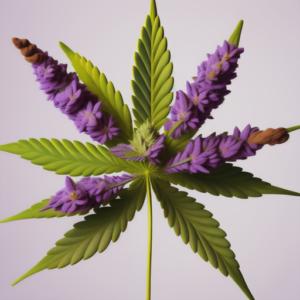Dosing Guidance for Dry Herb Vaporising
Dry herb vaporising offers a precise and efficient way to consume cannabis, allowing users to experience the therapeutic benefits of cannabinoids and terpenes without the potential harms associated with smoking. To ensure a safe and enjoyable vaporising experience, it’s essential to understand the boiling points of various terpenes and cannabinoids and how they impact the effects of cannabis.
Importance of Temperature Control
Temperature control is a critical aspect of dry herb vaporising, as different compounds in cannabis vaporise at specific temperatures. By adjusting the temperature, users can target specific cannabinoids and terpenes to customise their experience.
Boiling Points of Common Cannabinoids
| Cannabinoid | Boiling Point (°C) |
|---|---|
| THC | 157°C |
| CBD | 160-180°C |
| CBG | 52-65°C |
| CBN | 185°C |
| CBC | 220°C |
| THCV | 220°C |
Boiling Points of Common Terpenes
| Terpene | Boiling Point (°C) |
|---|---|
| Myrcene | 167°C |
| Limonene | 176°C |
| Pinene | 155°C |
| Linalool | 198°C |
| Caryophyllene | 130°C |
| Humulene | 198°C |
| Terpinolene | 185°C |
| Bisabolol | 329°C |
| Eucalyptol | 176°C |
| Guaiol | 167°C |
| Nerolidol | 161°C |
| Phytol | 160°C |
Dosage and Temperature Recommendations:
| Cannabinoid / Terpene | Temperature Range (°C) | Potential Effects and Benefits |
|---|---|---|
| THC | 157°C | Euphoria, Relaxation, Pain Relief |
| CBD | 160-180°C | Anti-inflammatory, Anxiolytic, Anticonvulsant |
| CBG | 52-65°C | Neuroprotective, Anti-inflammatory, Potential Antibacterial Effects |
| CBN | 185°C | Mild Sedation, Potential Sleep Aid |
| CBC | 220°C | Anti-inflammatory, Potential Antidepressant Effects |
| THCV | 220°C | Potential Appetite Suppressant, Anticonvulsant |
| Myrcene | 167°C | Sedating, Relaxing, Potential Anti-inflammatory Effects |
| Limonene | 176°C | Uplifting, Mood-Enhancing, Potential Antioxidant Effects |
| Pinene | 155°C | Alertness, Memory Enhancement, Potential Bronchodilator |
| Linalool | 198°C | Calming, Stress-Reducing, Potential Analgesic Effects |
| Caryophyllene | 130°C | Anti-inflammatory, Potential Gastro-protective Effects, No Psychoactive effects |
| Humulene | 198°C | Anti-inflammatory, Potential Appetite Suppressant |
| Terpinolene | 185°C | Uplifting, Potential Antioxidant and Anticancer Effects |
| Bisabolol | 329°C | Calming, Potential Anti-inflammatory and Antioxidant Effects |
| Eucalyptol | 176°C | Potential Anti-inflammatory and Analgesic Effects |
| Guaiol | 167°C | Potential Anti-inflammatory and Antioxidant Effects |
| Nerolidol | 161°C | Calming, Potential Sedative and Anti-fungal Effects |
| Phytol | 160°C | Potential Antioxidant and Anti-inflammatory Effects |
Dosage Recommendations
Dosage for dry herb vaporising depends on several factors, including individual tolerance, desired effects, the potency of the cannabis strain and prescriber’s guidance. Start with a low dose and gradually increase until the desired effects are achieved.
Safety Considerations
Always use a reputable vaporiser with accurate temperature controls to ensure precise dosing and avoid combustion. High temperatures (above 230°C) may produce harmful by-products and should be avoided.
Conclusion
Dry herb vaporising provides a customisable and controlled method of cannabis consumption. Understanding the boiling points of cannabinoids and a wide range of terpenes allows users to fine-tune their experience and target specific effects. Start with low temperatures and dosage, gradually increasing as needed, to enjoy the full potential of cannabinoids and terpenes while minimising potential adverse effects.
Disclaimer: The information provided in this context is intended for general informational purposes only and should not be construed as medical advice under any circumstances. It is essential to consult with a qualified healthcare professional or medical practitioner before making any decisions or taking any actions related to medical treatment or dosing. The content here does not replace professional medical guidance, and any reliance on the information presented is at your own risk. We strive to maintain accuracy and up-to-date information; however, we do not warrant the completeness, reliability, or validity of the information provided. Therefore, we disclaim any liability for any adverse outcomes or damages arising from the use or misuse of the information mentioned here. Always seek personalised medical advice from a licensed healthcare provider for your specific medical condition or situation.
Dosing Guidance for Dry Herb Vaporising Read More »


 Unlock with Patreon
Unlock with Patreon


